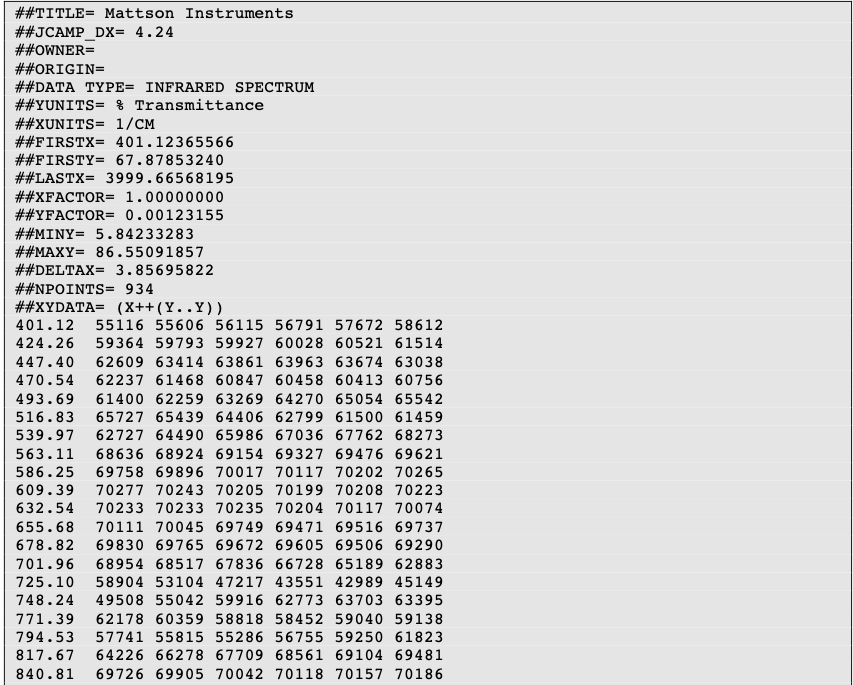HSQC / HMBC prediction
This tool allows you to predict the HSQC and HMBC spectrum of your sample or any other molecule. HMBC (Heteronuclear Multiple-Bond Correlation spectroscopy) is a 2D-NMR correlation experiment. Compared to COSY, which gives H-C-C-H proton correlations, this experiment gives connectivity information between carbons and protons that are separated by 2-4 bonds. Single bond correlations (i.e. correlations between C-H only) are often suppressed. This technique adds another dimension to the elucidation of molecular structure. You can see below an example of HSQC spectrum of sucrose.

The structure of the currently selected sample will be already drawn so that you may go ahead and click Calculate to calculate and simulate its HMBC spectrum right away. If you wish to simulate the spectrum of another molecule, you can draw it or you can paste the structure in the form of a molfile or a SMILES string. Structure drawing is powered by JSME. You may also drop or paste a JCAMP-DX file to superimpose an experimental spectrum over prediction.
How is a JCAMP-DX file structured.
JCAMP-DX file format
JCAMP-DX (Joint Committee on Atomic and Molecular Physical Data Exchange) is a standard file format for the exchange of spectra and related physical and chemical information between different spectrometers, databases or other systems.
The information is stored using ASCII characters and the file can be viewed, corrected and annotated with a text editor. The spectra are stored as a table containing (x,y) coordinate pairs. Besides the data points, it is possible to store metainformation and make comments. The file extension is .jdx.
A JCAMP-DX document is composed of an unlimited number of Labelled Data Records (LDRs). Each LDR starts with a “##” and ends with “=”. Any space, comma, slash or hyphen is removed and the text is written with capital letters.
Some examples of Data Labels:
- TITLE : title of the experiment
- END : the last line of the file
- XUNITS : the units reported on the x-axis
- NPOINTS : number of points

Two important LDRs are “XYDATA” and “PEAKTABLE”, which contain the spectral information. The former gives information in the form of a table where the first value in a line stands for an x coordinate and any subsequent values are y-coordinates with an equidistant increment on the x-axis. The latter provides information as a collection of (X,Y) pairs.
It is commonplace to compress the data tables. For instance, the table of numbers can be replaced by a line of characters (pseudo-digits). Among these pseudo-digits, there are PAC, SQZ, DIF, DIFDUP.

An example of compressed data using DIFDUP

An in depth description is given in the original paper by McDonald and Wilks. Insofar as JCAMP-DX is a well-described and accessible format, it partially aligns with the FAIR (Findable, Accessible, Interoperable, Reusable) principles . It is interoperable and reusable. Provided that the user makes it findable and accessible, JCAMP-DX will fully comply with the aforementioned principles.
The simulated HMBC spectrum, the 1H projection and the chemical structure with explicit hydrogens are linked, hovering over a peak in the spectrum will highlight the corresponding atoms in the structure and hovering over an atom will highlight the corresponding peaks in the spectrum.
1H chemical shifts and coupling constants are predicted using Spinus. Simulation from predicted parameters uses the method described in DOI:10.1016/j.jmr.2010.12.008. HMBC correlations are calculated based on atom-to-atom paths in the molecule: a correlation is shown in the HMBC whenever a hydrogen is joined by a path traversing no less than Minimal number of bonds and no more than Maximal number of bonds to the carbon atom. You may adjust these Simulation parameters in the module right next to the Calculate button.
A HSQC spectrum can be obtained by setting Maximal number of bonds and Minimal number of bonds to 1.